One of our wonderful volunteers, Ian, has been busy reading and transcribing elements of the Butterfield archive – most recently he’s been piecing together some of the stories that the receipts and other documents can tell us. Here’s a timely one for the festive period…
Another Butterfield Christmas
This year’s Christmas blog draws on purchase receipts which are from the period when Frederick William Louis, Henry Isaac’s son and only surviving child, had moved across to America following his marriage to Jessie Ridgway, an American, which had not met with Henry Isaac’s approval.
Initially following the marriage, Frederick William Louis had served as the American consul in Ghent but the damp climate had brought on rheumatism and a change of political administration gave him the opportunity to leave. Frederick William Louis used his family capital to make money by dealing in stocks and shares and the couple settled in New York which Jessie found unconducive, finding it noisy, dirty and the summer humidity oppressive.
The couple and their little daughter, Marie Louise, named after her short-lived grandmother, moved to Washington and set up home in an apartment there. The wealth of documentation allows a very detailed picture to be drawn of their life there as even receipts of modest purchases of goods and grocery have been retained, including laundry receipts.
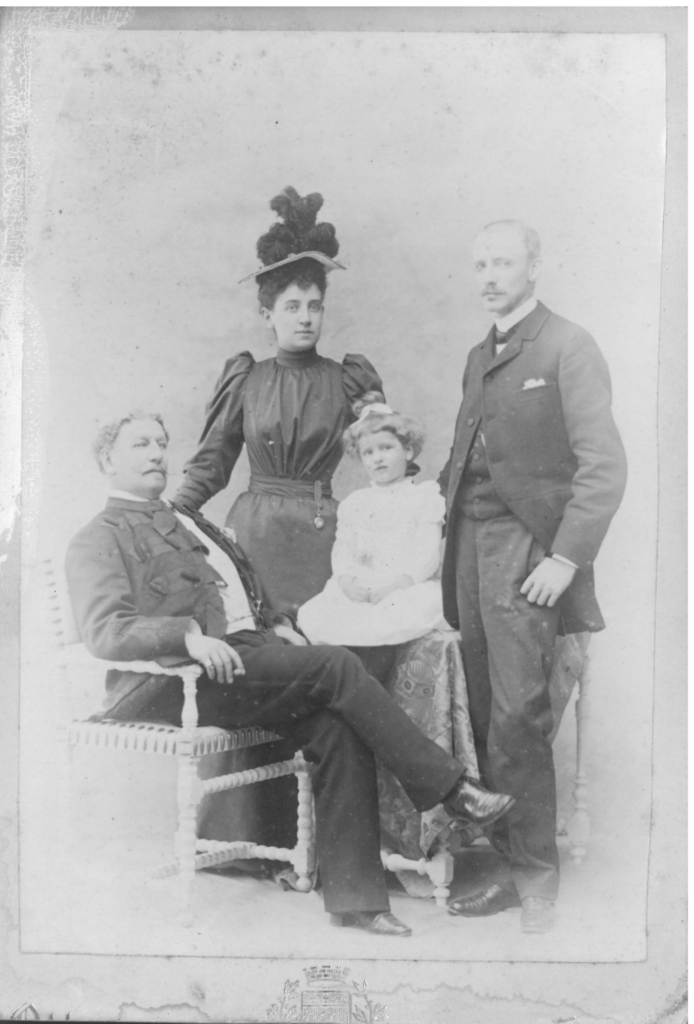
We know that the couple moved to Washington at the end of 1892 with the contents of their New York apartment being shipped there on the Baltimore and Potomac Railway, with one item, a desk being shipped separately by boat from pier 27 on 11th November. They settled in an apartment on 18th St and began making further purchases.
Find out more about 18th Street here.
There is a composite bill from an upmarket retailer for various work carried out there including re-covering an armchair, repairing a mahogany desk – possibly the one freighted from New York .
The apartment must have been relatively substantial as the receipt itemises making velour curtains for the drawing room, silk curtains for the parlour and more velour curtains for the hall which had an upper and lower section.
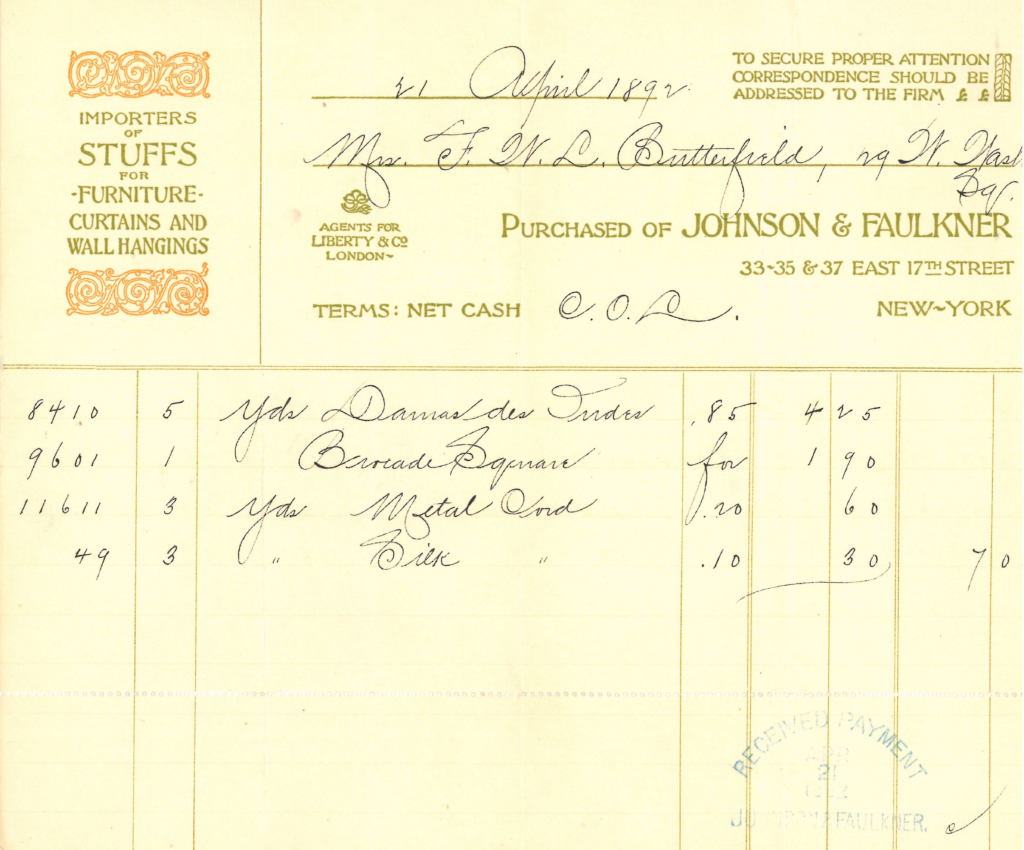
Receipt from Faulkner & Co – There are Arts & Craft elements to the design of the receipt, and they describe themselves as Agents for Liberty & co.
Receipt from Tiffany and Co, Union Square New York. They describe themselves as ‘Manufacturers of Jewelry, Silver Ware and Plated Ware. Watches, Clocks, Leather Goods and Stationery’
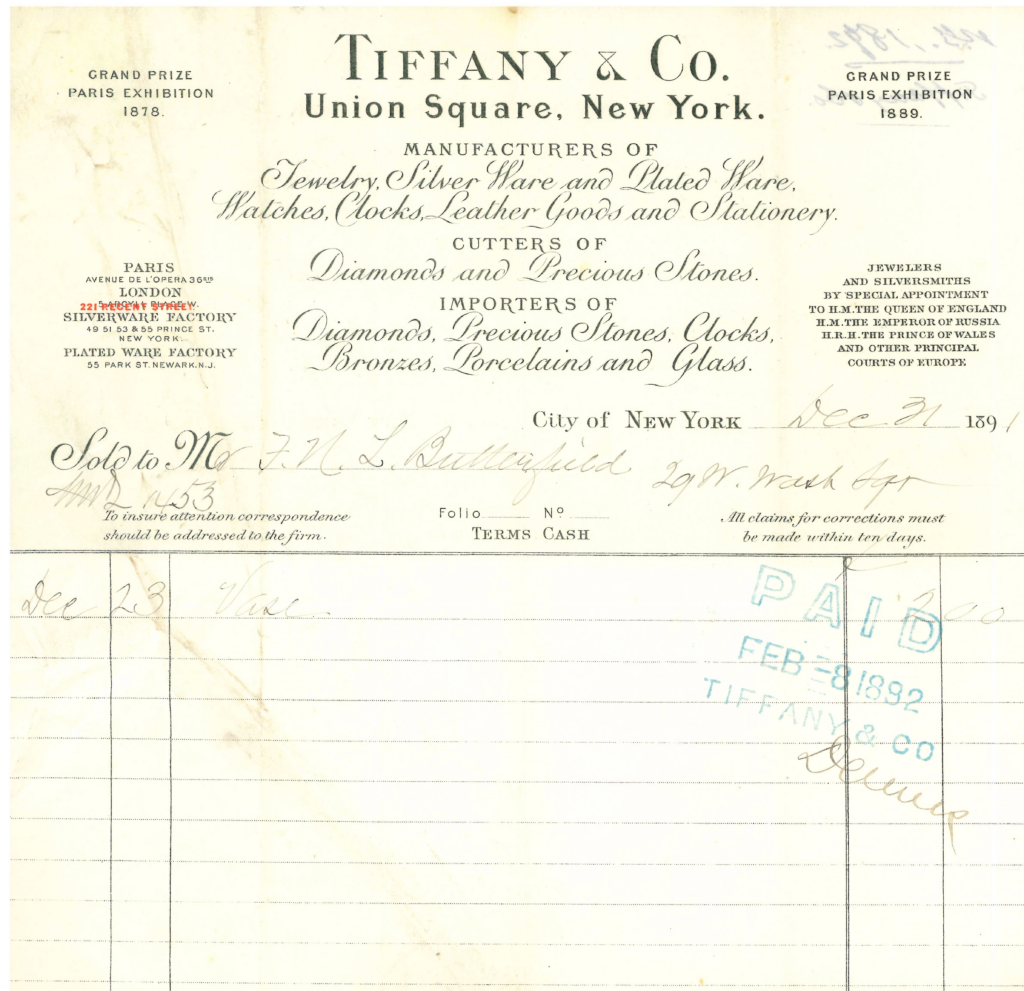
Amongst the receipts from the Adams Express Company were for the despatch of a number of parcels on 23rd Dec, demonstrating that leaving everything to the last minute isn’t a modern thing.
Amongst the recipients were Mrs Jacob Ridgway, Jessie’s mother, and although the contents of the package weren’t itemised, we know the approximate value of the gifts: in the case of Jessie’s mother, $30, Mr Fred Roosevelt (presumably a cousin) received a gift valued at $10.
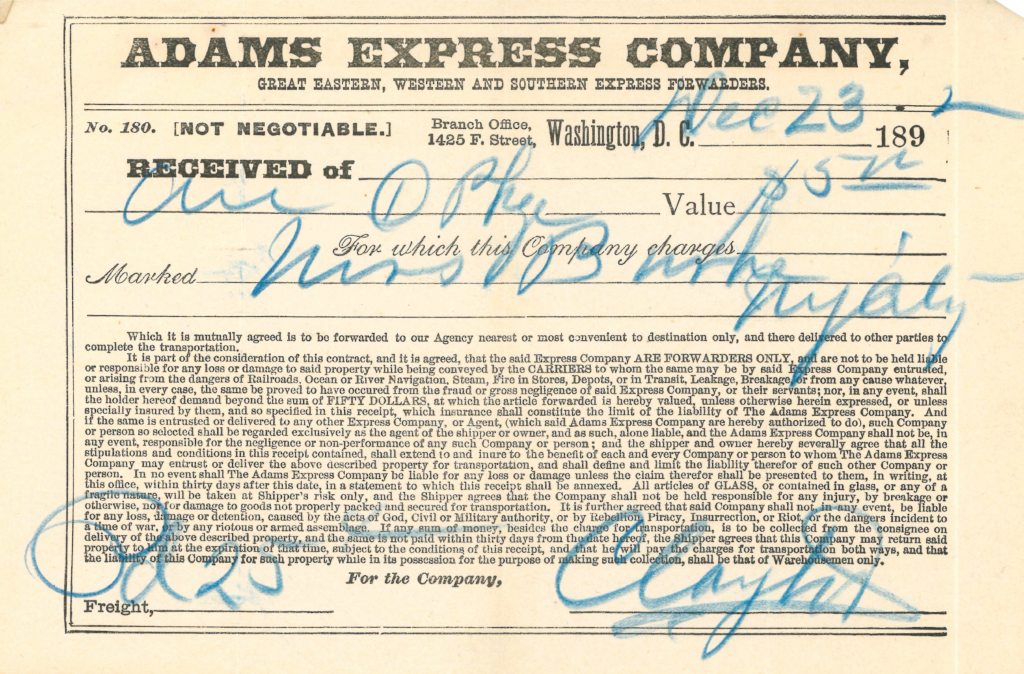
The one for Mrs Burke, Jessie’s stepmother, was valued at $5 and one of the same value was sent to James Wright, Henry Isaac’s old business manager at Ingrow, England, the last through a New York Company James must have had business links with.
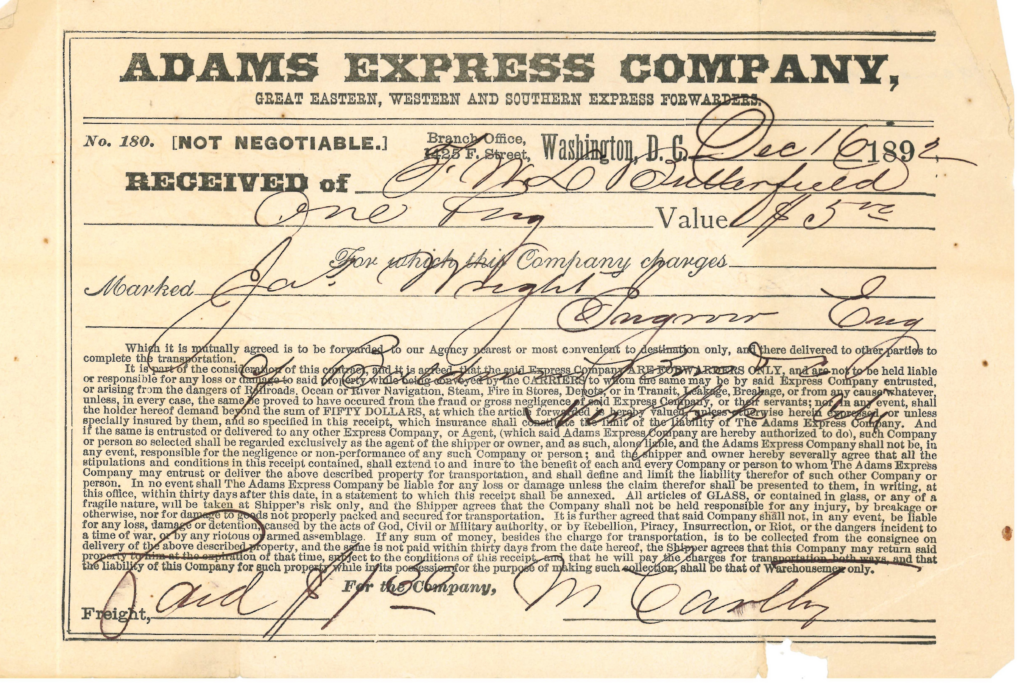
There must have been other recipients as Frederick William Louis’s aunt, Caroline Falcon Butterfield, the widow of Fred Butterfield and her daughter, lived in New York and had taken the young couple’s side in the matrimonial dispute. Nor would it have helped Frederick William Louis’s cause to have missed his father off of the list.
One of the most poignant of the receipts is a handwritten note in pencil from a certain Jemima Washington which reads “Will you please let me have $3 (Blank) weeks washing. I would not ask you but I want to get my little girl a coat and I have not enough money to get it with“. The little note is dated 24 Dec 1892. At the bottom of the note also in pencil are the words “paid $3 in advance “ F.W.L.B.

It is to be hoped that the little girl enjoyed her winter coat. Letters from work people are typically under represented amongst the Butterfield papers, so let’s end with another one.
Jemima seems not to have been awed by her employers, whose less fragrant linen she was (over)familiar with as another note of March 15 1893 reads ”Mrs Butterfield please let me have the half months wages as it is the 15th and oblige Jemima Washington” which probably reflects the hand to mouth state of the poor but proud woman’s finances.
The only thing left to say, is a Merry Christmas from us, and from Ian, our volunteer who continues to unearth these stories for us…